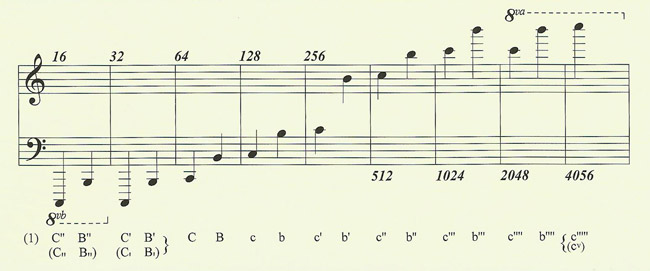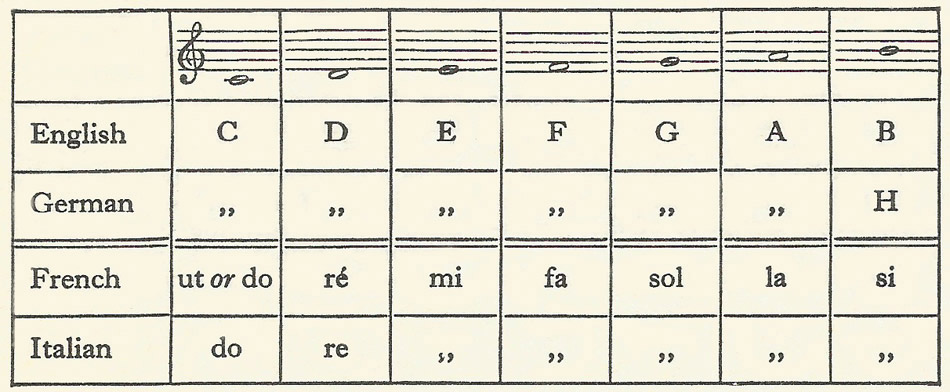pitch

Pitch nomenclature.

Pitch names of the notes in different languages.
Pitch is the psychoacoustic term for how high or low a sound is perceived by the human ear. 'Psychoacoustic' means that it depends on both the (objective) physics of the sound involved and the (subjective) way it is interpreter by the listener.
Pitch is closely related to, but not identical with, a sound's frequency, or rate of repetition. Whereas frequency is an objective quantity, measuring how many waves there are per second, pitch is the sensation of frequency. Below a frequency of about 1,000 hertz (Hz), the pitch is slightly higher than the frequency, and above 1,000 Hz the position is reversed. The loudness, or amplitude, of a sound also affects the pitch. Up to 1,000 Hz an increase in loudness causes a decrease in pitch. From about 1,000 Hz to 3,000 Hz the pitch is independent of loudness, while above 3,000 Hz an increase in loudness seems to cause a raising of pitch.
Pitch can be measured in mels (see mel scale); a note with a frequency of 1,000 Hz and a loudness of 40 dB above the absolute threshold of hearing has a pitch of 1,000 mels.
Pitch names of the notes
In the Western diatonic scale, the natural tones (white keys on the piano) have the following names in different European languages. Note that B flat in English is B in German, and that B in English is H in German.


